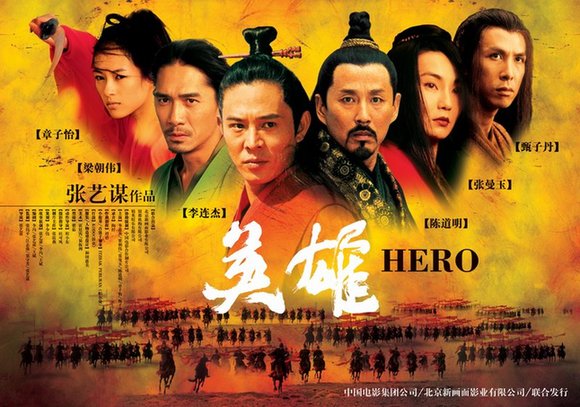Top 10 Chinese-language films
- By Pang Li
 0 Comment(s)
0 Comment(s) Print
Print E-mail China.org.cn, September 3, 2012
E-mail China.org.cn, September 3, 2012
China has a proud history of filmmaking. The first Chinese film was made in 1905, ten years after the birth of film in France. In the next two decades, Chinese films started to boom. In the 1920s, Chinese big cities saw hundreds of film production companies established. Port city Shanghai played a crucial role. It was home to more than 140 production companies. It was also the birth place of China's first feature drama.
In the 1930s and 40s, China gradually plummeted into decades of political turmoil as the country was involved in perennial wars which devastated its people. But Chinese cinema did not stop growing. Filmmakers turned their eyes to the cruel realities and started to make pictures with strong social commentaries. Shanghai remained the creative center at that time. Some of the all-time classics of Chinese cinema were made by Shanghai-based companies during that period, like "Crossroads" (1937), "Angels on the Road" (1937) and "A Spring River Flows East" (1947). Those well-acted, thought-provoking films are still relevant today.
During the 1950s, the cinematic scenes in Chinese mainland, Hong Kong and Taiwan were ushered into a new era. But the center gradually moved to Hong Kong. Nicknamed the "Hollywood of the East," Hong Kong developed its star system and distinctive genres, producing world famous filmmakers. From 1970s to mid-1990s, Hong Kong grew to become the second largest film production base in the world following Hollywood. It was said that Hong Kong films could be found wherever Chinese people lived across the world.
On the Chinese mainland, film production and market were tightly controlled by the authorities after 1950s. After the opening-up and reform scheme was initiated at the end of 1970s, the state-funded studio system started to collapse, forcing filmmakers to go commercial. As a result, big-budget, star-studded productions emerged, aimed for high box office returns. People were drawn back to theaters. The film market grew by leaps and bounds with the number of screens soaring and ticket sale revenues skyrocketing. In 2011, nearly 560 feature films were made on the Chinese mainland, with box office revenues grossing over US$2 billion. But behind this prosperous market is a huge bubble and serious speculation. In addition, production quality on average is quite far from satisfactory.
In its long history of cinema, China has produced many great filmmakers. Some of their works are timeless. Here we present ten Chinese-language films. Most of them are masterpieces, arguably or not. One or two of them have an industrial or cultural significance that overweighs their quality.
Hero, 英雄, 2002, Chinese mainland
If you want to pick up a film that has ushered the entire Chinese film industry to a new era, it must be Zhang Yimou's 2002 assassination-themed blockbuster "Hero." Following Hollywood's production process, the film cost a whopping US$30 million to make, becoming the most expensive Chinese film at that time. It rejuvenated China's then weak film market by drawing crowds back to theaters. The mega-hit took in more than US$30 million at the box office. It was the first film to hit such a high mark in several decades.
Internationally, the film was brilliantly received. Film critics highly praised its dazzling visuals. Distributors were obviously confident of its potential returns. In North America, the film opened as No. 1 in weekend box office in over 2,000 theaters. Overall, it earned more than US$120 million in international markets.
The film set standards for subsequent big budget productions in casting and production, but unfortunately not in storytelling. The consequence of ignoring the story has resulted in other excessively financed, substandard productions which insult the viewer's intelligence, like Chen Kaige's ill-famed "The Promise" (2005).









Go to Forum >>0 Comment(s)